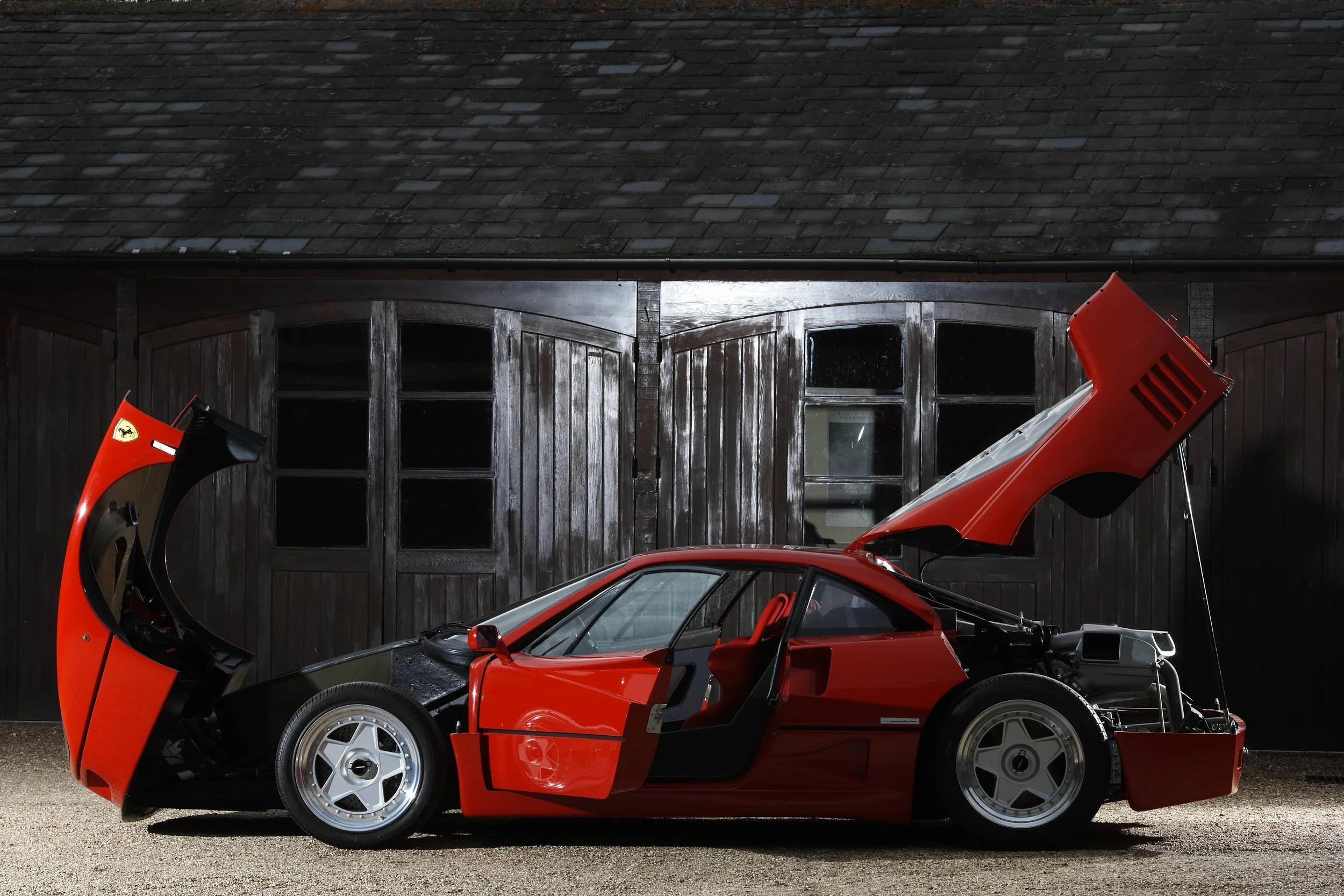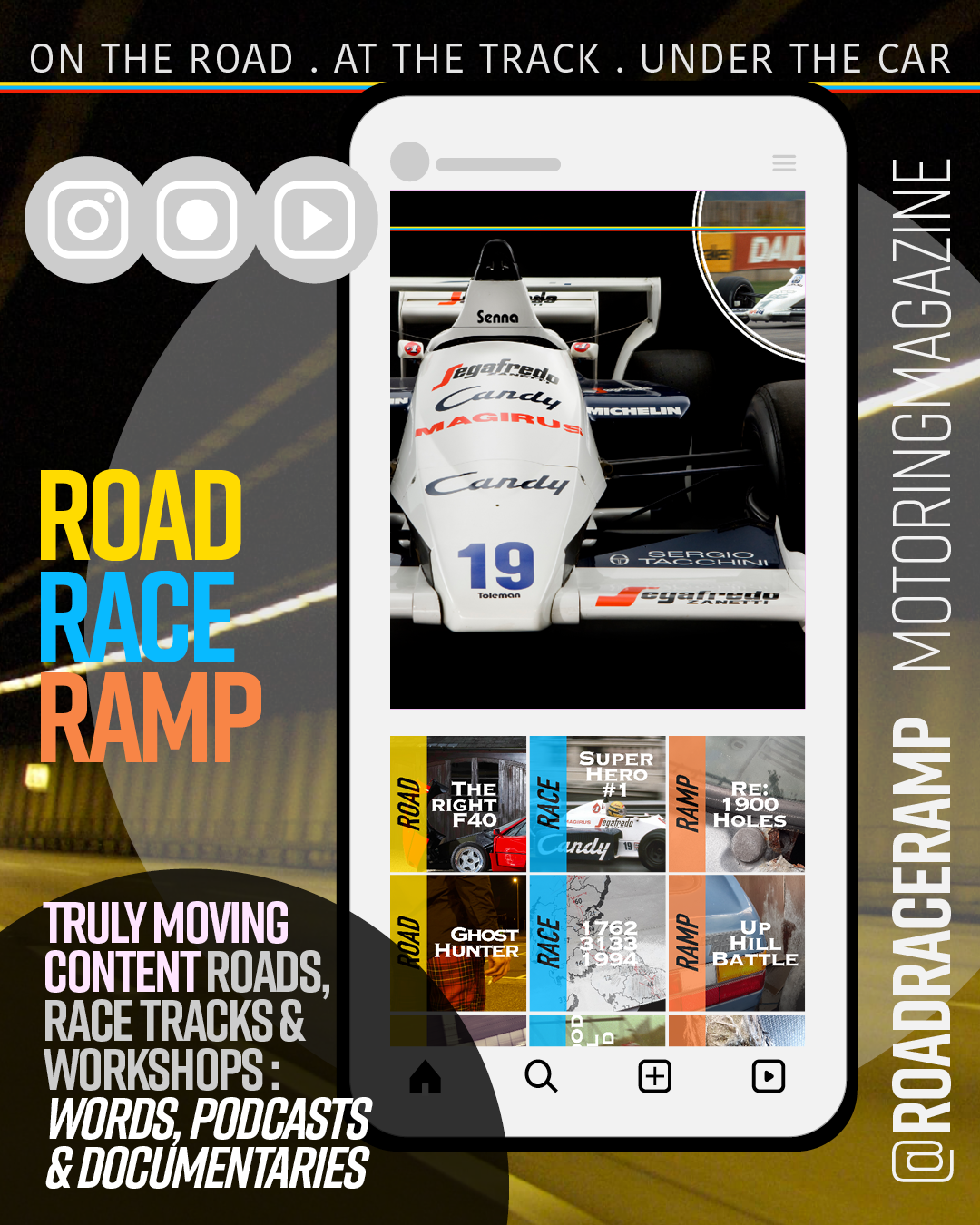

ROAD
RACE
RAMP
MOVING
MOTORING MAGAZINE
MOBILE MOTORING MAGAZINE
The weekly content will also be packaged in a much longer form, widescreen format, that can be enjoyed on both desktop and smaller mobile devices.
The magazine takes the familiar landscape that bridges the double-page print layout and visual of cinematic video to deliver an immersive interactive programme of content.
INTERACTIVE VIDEO
Video segments are overlaid with interactive hotspots (similar to website navigation) allowing audiences to jump throughout a video, as well as being able to chose a preferred camera angle: seamlessly switching the moving visual between bonnet-forward, rear-facing, driving seat, or from the exterior.
SHOW SEGMENTS
On-road experiences / road trips, race cars / events, and projects / home workshops / professional garage visits, will together make up the three chapters of the programme, helping to cover most bases of car appreciation.
CHOSE YOUR CONTENT
Throughout the video duration there are options to steer off the beaten path and chose an alternative route, which in the case of one story invites the audience at different junctions to take a scenic route, take time out to visit a museum, and stop-over night to explore a city. You can, of course, ignore the distractions, and continue with the video’s intended route!
1.5 TO 5 HOURS OF STREAMED CONTENT
Each 90-minute episode is streamed in seamless HD, divided up across the three segments plus an editorial/column section, with the fun change of directions growing the overall engagement time to 5 hours.





Road trips and car features race builds and competitions garage projects and workshop visits
-
ROAD.RACE.RAMP has taken many forms over its gestation, from glossy bound magazine, encoded business cards, to a full-motion desktop publication.
In time, perhaps, they will all have their moment to shine, but it is Instagram that we have chosen to first explore, with its global audience, evolving integrations, and a media-friendly workspace that invites video, photo galleries and room to write more than a few words (2200 characters to be precise).
Instagram will therefore be the magazine’s spiritual home, in place of a website, embracing the platform’s three-square structure to present regular content (one story per frame) on the subject of road, race and ramp. The grid system of Instagram will also allow the magazine to carry advertising campaigns in their own post/frames, in addition to the in-feature advertising that the layouts welcome.
With up to 10 sections available per post, ROAD.RACE.RAMP can unify words, pictures, animations, video content and audio narration within one targeted story (presented across 10 phone widths) essentially three and half print-magazine pages in width by half a print-magazine height.
A vertical interactive mobile-focussed publication has also been created, alongside a wider-format landscape version that seamlessly streams high-definition interactive video content, both of which will allow breathing space for more elaborate longer-form content, such as in-depth documentaries and road trips. -
2024 will mark 30 years of automotive journalism for Publishing Editor Jon Saxon – a career kickstarted by VW Motoring magazine in September 1994, before becoming Motoring Content Provider for Yahoo!, and later working for the UK titles Performance VW, Banzai, The Golf, Fast Car, and J-Tuner.
Work featured overseas in Eurotuner, Sports Car International, and Sport Compact, during a three-year period in North America, ahead of a move to Dubai, where Jon became Features Editor for the Middle East syndication of CAR (Emap) and later Editor-in-chief for evo (Dennis).
Jon also wrote the 90-day diary Quarter Mile and Then Some, which charted his adventure across North America in 2002, in a quest to experience a 10-second street racing car. -
ROAD.RACE.RAMP is brought to you by SON OF SAXON, the publishing company run by Jon Saxon – created to launch the interactive online magazine, RubberDuckMag in 2009.
Globally championed as the world’s first interactive car magazine (alongside Dennis Publishing’s iMotor who launched on the CEROS platform at the same time) the online publication challenged convention and delivered a fresh approach to the motoring segment – brought together by a team that previously staffed at Top Gear, Car, evo, Max Power, and Playboy.
RubberDuckMag also embedded sign language in all its content (including advertisements), went on to proudly receive Silver at the 2010 Digital Magazine Awards – judged by The Telegraph, WIRED, and Quark (Gold was awarded to Mazda for ZoomZoom!) and featured in the highly regarded Innovations in Media Report, 2013.
Son of Saxon also produced the cult-classic British pub magazine, Doghouse, developed the interactive t-shirt brand ‘MPTees’ that played unsigned music, and trialled the sharing magazine CHUCK – quite possibly the only publication to ever take the form of a frisbee, we believe.

